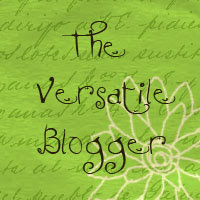PR For Poets provides the information you need in order to get your book into the right hands and into the worlds of social media and old media, librarians and booksellers, and readers. PR For Poets will empower you to do what you can to connect your poetry book with its audience!
EXCERPT
CHAPTER 7: PR KITS AND PITCH LETTERS
Do It Yourself or Hire Someone?
In this chapter, I'll answer the questions: “What is a PR Kit? What is a pitch letter? Do I have to do these myself? What's my publisher's role? Can I hire someone to do it?"
If you haven’t worked as a journalist, reviewer, or in publishing before, you may not be familiar with a PR kit. A PR kit, also known as a media kit, is a collection of physical or digital marketing materials designed to get the attention of the media. PR kits are sent to traditional media outlets, such as newspapers, radio and TV stations, journalists, and prominent bloggers. A pitch letter usually accompanies the kit and is the hook that piques the recipient's interest. Pitch letters are critical when you don’t have a relationship with the person or organization receiving your kit. Your kit can be in a digital format (often a PDF file), which is usually sent by email or made available for download from a website. Some outlets still require that a hardcopy be mailed.
Your Basic PR Kit And “Sell Sheet”
The basic PR kit includes a "sell sheet," which is usually a single sheet, sometimes printed on both sides (often in color). Your sell sheet can be both digital and in hardcopy. It should include the following information:
Key data for your book—this includes the publisher, distributor, release date, number of pages, format, ISBN number, website, and the PR contact. This provides important information about the book and facilitates the ordering process for libraries, bookstores, and universities/schools.
A summary of the book—this is usually 200 words describing the breadth of the work. It's important to be broadly descriptive because many of the blurbs will hone in on specific aspects.
A graphic of the book’s cover—because color images have more impact, you may want to spend extra on color copies or borrow the color laser printer at work for your hardcopy version.
One or two blurbs—these blurbs are short and only consist of a sentence or two. They present different facets of the work not covered in the summary. Pick the most famous of your blurbers to feature. Sometimes this choice is up to your publisher, not you.
Your author photo—hopefully you already have this, so it's time to use it.
A short author bio—really, keep this short. Include only your key accomplishments or items that might hook the specific reader (for example, if you are from his/her home town).
PURCHASE FROM:
Jeannine’s twitter handle is @webbish6.
For more information, visit www.webbish6.com.


























2 comments:
Lovely spotlight (and blog)! I look forward to reading your review.
Thanks for posting the spotlight. I hope you enjoy your well-deserved break and vacation!
Post a Comment